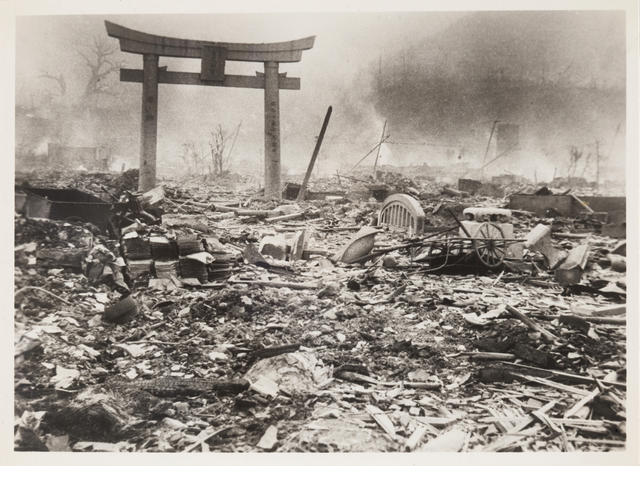Nagasaki one day after the atomic bombing seen in newly-discovered pictures
Japanese military photographer Yosuke Yamahata took the images showing the extent of the devastation

Poignant images captured in the aftermath of the Nagasaki bombing are to be sold at auction in New York this week.
The collection of 24 newly discovered photographs taken by Japanese military photographer Yosuke Yamahata depicts the devastation wrought by the atomic bomb at the end of the Second World War.
Yamahata was on an assignment near Nagasaki when the bomb dropped on 9 August 1945. Upon hearing the news he took a train to the city along with the writer Jun Higashi and the painter Eiji Yamada, arriving at 3am the following day.
Having been instructed to document the destruction for military propaganda purposes, he worked from dawn to dusk, taking around 119 photographs on two different cameras.
But, unbeknown to Yamahata at the time, one of his cameras had a faulty shutter device - the images to be auctioned are thought to include 12 taken from the original negatives of this defective camera.
They show a city riven to the ground and dotted with dazed and blackened survivors.
Writing later about what he had experienced that day, Yamahata described Nagasaki as “hell on earth”.
He said: “The appearance of the city differed from other bomb sites: here, the explosion and the fires had reduced the entire city (about four square kilometres) to ashes in a single instant.
“Relief squads, medical and fire-fighting teams, could do nothing but wait. Only the luck of being in a well-placed air raid shelter could be of any use for survival.”
He went on: “Even if the medical and fire-fighting teams from the surrounding areas had been able to rush to the scene, the roads were completely blocked with rubble and charred timber. One had not the faintest idea where the water main might be located, so it would have been impossible to fight the fires.
"Not a single cloud blocked the direct rays of the August sunlight, which shone down mercilessly on Nagasaki, on that second day after the blast.”
Yamahata’s photographs, which remain the most complete record of the atomic bomb attack, appeared in Mainichi Shimbun on 21 August.
But they were seized after the arrival of the American forces under a strict censorship policy – although Yamahta managed to hide the negatives.
These images were found in a photo album confiscated by an American military policeman from a citizen in Osaka at the end of the Second World.
The photo album is expected to fetch up to £2,000.
Yamahata died from cancer in 1966, aged just 48. His illness is believed to have been caused by his exposure to radiation at Nagasaki.
But his memory lives on in his photos. In 1952 he wrote: “Human memory has a tendency to slip, and critical judgment to fade, with the years and with changes in life-style and circumstance. But the camera, just as it seized the grim realities of that time, brings the stark facts of seven years ago before our eyes without the need for the slightest embellishment.
“Today, with the remarkable recovery made by both Nagasaki and Hiroshima, it may be difficult to recall the past, but these photographs will continue to provide us with an unwavering testimony to the realities of that time.”
Join our commenting forum
Join thought-provoking conversations, follow other Independent readers and see their replies
Comments